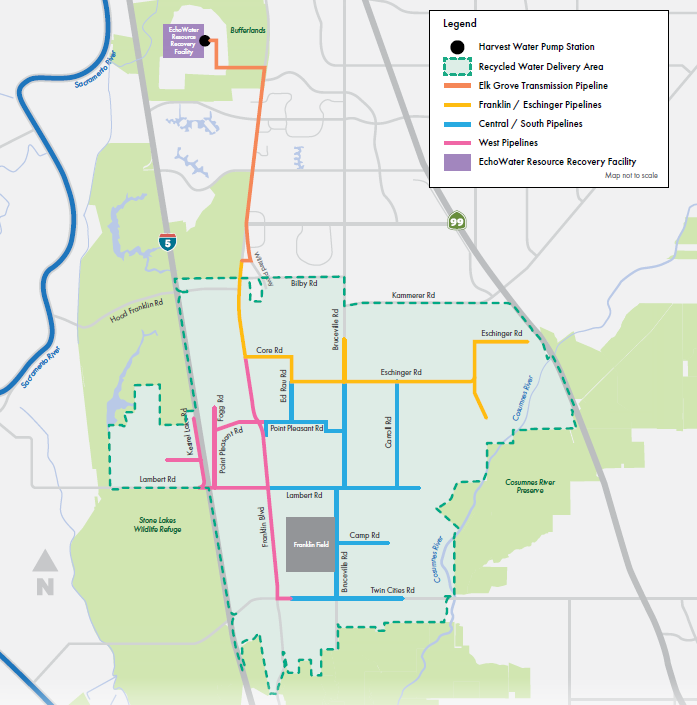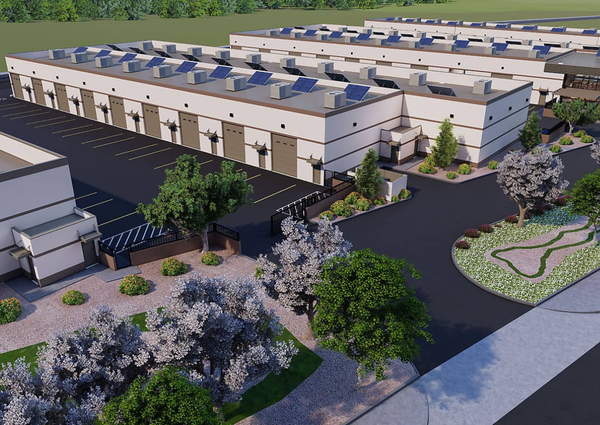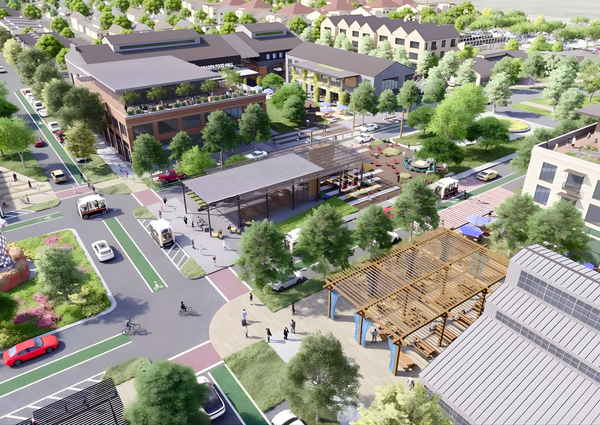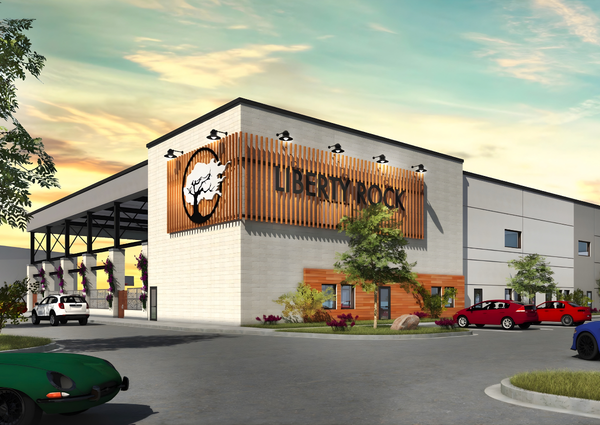$600 Million Bet on Wastewater: Sacramento’s boldest water project yet.

In the fields south of Elk Grove, where groundwater pumps have long been lifelines for farmers, a new kind of water is coming — not from wells or rivers, but from the region's sewers.
Along Franklin Boulevard, excavators claw through dirt, traffic detours snake past trenching zones, and the clang of pipeline construction has replaced the hum of daily commuting. Beneath it all, workers are installing the backbone of what will become California's largest agricultural water recycling system.
It's called the Harvest Water Program, a nearly $600 million infrastructure project designed to deliver treated wastewater from Sacramento's sewer system to more than 16,000 acres of farmland and habitat in the county's southernmost area.
Up to 50,000 acre-feet of recycled water will move through the system each year — roughly 16 billion gallons, or enough to fill 24,000 Olympic swimming pools. That's also about the annual water use of every home in Elk Grove, multiplied by three.

Construction on the Harvest Water pipeline began in early 2024 and is on track to be operational in 2027. As of late May, more than 67% of the pipelines have already been installed, according to the Sacramento Area Sewer District, which is leading the project.
"The Harvest Water system is expected to begin delivering recycled water to agricultural users in 2027," SacSewer said in a written statement. "The rollout of water deliveries is planned to occur in phases, ensuring a smooth transition and allowing for adjustments based on user feedback and system performance."
Already, residents and commuters in Elk Grove and the surrounding rural communities are feeling the impact. Twin Cities Road east of Bruceville Road will remain closed from early June through late July, while Franklin Boulevard between Point Pleasant and Core Roads is expected to stay shut through early June.
In Elk Grove, all lanes on the east side of Franklin Boulevard between Laguna and Elk Grove boulevards are closed, with two-way traffic redirected to the west side — a detour expected to last through the end of 2025.
Meanwhile, greenbelt areas near Ehrhardt Channel have become active construction zones, staging heavy equipment and pipe segments. Residents have also been warned of seasonal noise disruptions like pile driving and sheet pile removal, which are expected to continue into the warmer months.

The project is funded through a combination of state, federal, and local sources. More than $290 million is coming from Proposition 1, California's statewide water storage investment program. An additional $30 million is backed by the U.S. Bureau of Reclamation's Title XVI reuse initiative. The rest is supported by regional partners and loans.
Project leaders say the purpose is straightforward: take highly treated wastewater that would otherwise be discharged into the Sacramento River and instead use it to irrigate crops, recharge groundwater, and support fragile wildlife habitats that depend on water year-round.
The stakes are high. Southern Sacramento County has seen steady groundwater depletion in recent decades, and a state law requiring local agencies to manage and replenish aquifers — the Sustainable Groundwater Management Act — is looming. The project could eventually help recharge up to 370,000 acre-feet of groundwater—about one-third the capacity of Folsom Lake.
According to the Sacramento Area Sewer District, the recycled water will also support more than 5,000 acres of habitat, including roosting grounds for Sandhill cranes and nesting areas for Swainson's hawks and other protected species. It's a rare example of a large-scale water project that appears to serve both agriculture and the environment — without forcing a choice between them.
While recycled water has long been used in places like San Diego and the Bay Area, this scale of delivery — into open rural land — is relatively new for the Sacramento region.
"We're actively engaging with local growers through workshops, field visits, and one-on-one outreach to build confidence in the use of recycled water and address questions related to water cost, reliability, and quality," the agency said. "Recycled water must meet stringent regulations designed to protect public health and the environment."
If all goes as planned, by 2027, Sacramento's wastewater will no longer end its journey at the river's edge. Instead, it will head south — under farm fields, past country roads, and into a system built not to discard it, but to use it again.





